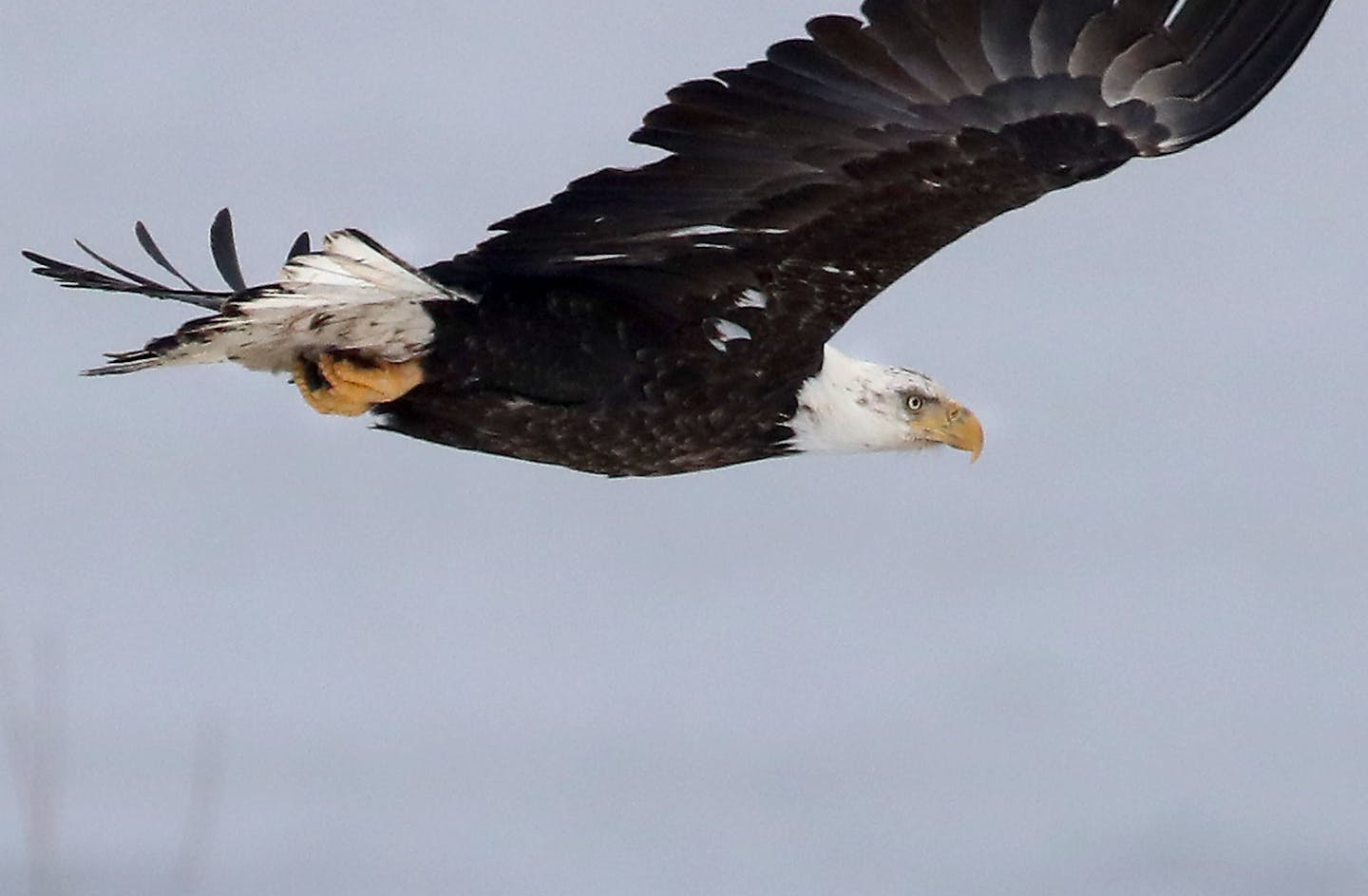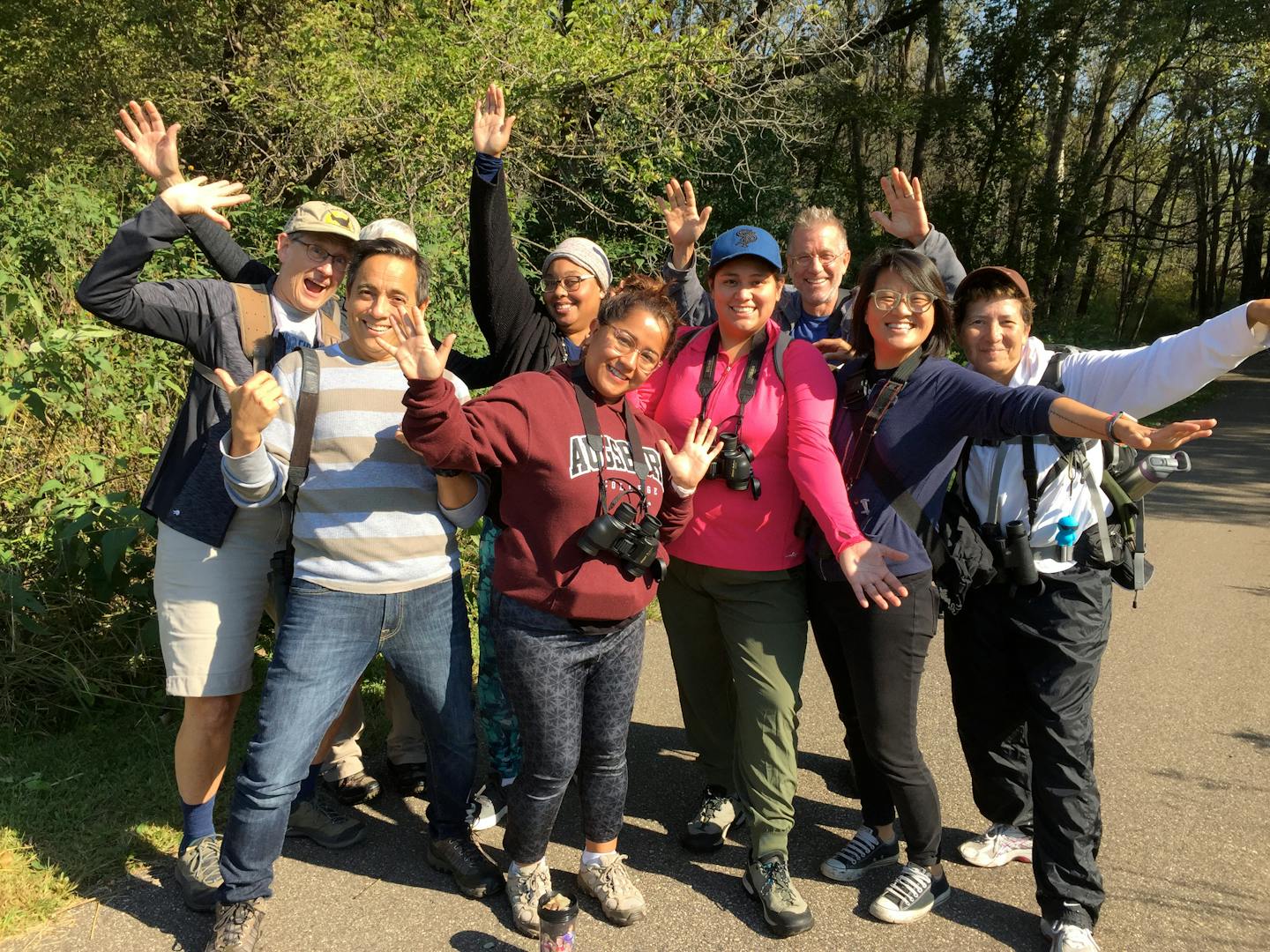Interesting. Timely. Cool and clever. There are a mix of happenings in Minnesota's avian community worth checking out this month (and weeks to come):
Fall migration
Eyes are skyward from the Hawk Ridge Bird Observatory perch on East Skyline Parkway in Duluth for fall migration along Lake Superior. Hawk Ridge begins its count Saturday and continues into late fall (peak time is early September through early November). Depending on the winds — north/northwesterly are most favorable — raptors can be seen by the hundreds as they work their way south, some as far as South America.
On average, Hawk Ridge counts as many as 60,000 migrating raptors and tens of thousands of other birds, from waterfowl to warblers. Sharp-shinned hawks, kestrels and broad-winged hawks are among the first species seen, and they can pass en masse: A record 2,515 sharp-shinneds were counted Sept. 24, 2017. They peak in mid-September to early October. Conversely, red-tailed hawks, northern goshawks and golden eagles will peak into November.
This fall, count director John Richardson said northern saw whet owls are of particular interest. There are markers that the species is doing well: Like Hawk Ridge, Whitefish Point Bird Observatory in Paradise, Mich., is in a migratory corridor, and has had a record summer, banding 643 owls since July 1 and 573 juveniles.
Turkey vultures and bald eagles continue in record numbers in recent years, but data shows they're moving later. Warmer temperatures in the northern territories could be keeping the birds longer, said Richardson, suggesting the effects of climate change on migratory patterns.
The cycles bring an urgency to the fall — and spring — counts.
"Just by us being there and pointing things out and talking about things is important in itself," Richardson said. "To actually have 50 years of data, some of the things are kind of eye opening, good and bad."
Richardson said thousands of people will come through during the migration, some to watch, some with questions. He said he expects even more given the flight to the outdoors during the pandemic, and he is hoping people will use common sense and take safety precautions — as he and his staff must.
"I really push with the kids and with our education, seeing a value in it. (Raptors) aren't just these things. There is value to them. We are all part of that chain," he added.
Look for updates and previous year's detailed count reports at hawkridge.org.
Owls across mediums
It's an owl irruption, of sorts, for the International Owl Center — a burst of artwork.
The center, in Houston, Minn., collaborated with the Upper Midwest Bead Society for an owl art show. There are more than 30 entries, featuring necklaces, bracelets and more, and all viewable online.
Also, an exhibit of artwork by Russian children is on display at The Museum of Russian Art in Minneapolis. The collection is from the center's popular Children's International Art contest this year, which drew 2,500 entries from 42 countries. The exhibit runs through mid-October.
Center executive director Karla Bloem said the art show idea formed after a member of the beading group attended a center presentation in Rochester. The show was timed to coincide with Owl Awareness Day this month.
The children's artwork already has a massive following, second only in interest to programs with the center's teaching owls like Uhu the Eurasian eagle owl and Ruby, the great horned owl.
Bloem said the coinciding programs weren't intentional, but art and owls have been a good match.
"It's fun to pair this," said Bloem, adding that owl imagery and art has a long history across cultures.
"Owls have been depicted in innumerable cultures around the world from the beginning of time. Some of the oldest cave art in the world is owls in France. Owls for whatever reason it is have captivated the minds, hearts and creativity of humans throughout the world and throughout history."
The center reopened to the public in mid-June, with restrictions. Up to 20 people are allowed to visit Friday through Monday in two-hour time slots (10 a.m., 12:30 p.m., 3 p.m.) Register in advance at internationalowlcenter.org.
Social raptors
The Raptor Center's Instagram (@theraptorcenter) delivers a clever mix of photos and video that illuminates the daily lives of the raptors.
A recent highlight is video of a mist bath for one of the teaching birds, Lois, a beloved great horned owl. Head down and wings fanned, Lois appeared to delight in getting clean. (And who knew birds spend so much of their days preening their feathers?) In another post, a staffer worked to untangle sports netting from the body and talons of a great horn likely pursuing a meal. The tip: Take down or cover sports netting when not in use.
That intimate glimpse is intentional, said Steve Turnbull, an executive administrative assistant at the center who manages the feed. It's about highlighting the animal — wild animals, not pets — more than the human-animal interaction.
"(Instagram) lends itself to putting the focus on the animals and making it personal and a snapshot of their daily life and what they do," Turnbull said.
The center has creative digital programs, too. Online visitors can schedule a "Raptor Zoomie" and have one of the raptors (with an education staff member) turn up for the first 15 minutes of a Zoom meeting. Turnbull said the program has been well-received, and it's good stimulation for the teaching birds, who miss visitors to the center on the University of Minnesota campus. The center has remained closed during the pandemic, but it's finding creative means to pursue its mission of helping and protecting birds.
Eagles at the center
The National Eagle Center was forced to close its doors in Wabasha in March during its annual festival, one of its busiest times of year.
It reopened in late June with precautions. The center is limiting numbers to 50 visitors per session at 10 a.m., noon, 2 p.m. and 4 p.m., and visitors need to preregister online at nationaleaglecenter.org. Visits from newcomers and returnees have been steady, said marketing manager Ed Hahn.
With its popular classroom sessions at the center out because of safety protocols, the center launched two new experiences in August. People can preregister for guided tours in groups of 20 or fewer at noon and 2 p.m. Wednesdays. Smaller groups confined to a family or friends also can set up a behind-the-scenes tour — a deep dive, Hahn said, into the eagles' biology, behavior, care, and their interaction with staff.
On average, the center has 70,000 visitors each year.
Urban Birding Collective
In case you missed it, Star Tribune birding columnist Val Cunningham had an evocative story Aug. 4 about Urban Bird Collective, a St. Paul group striving to be a place for people of color and in the LGBTQ community to follow their love of birds outdoors — and feel safe doing so. Many don't, as Cunningham and Urban Bird Collective founder Monica Bryand made clear.
Wrote Cunningham: "Let's face it, bird-watching has been a predominantly white activity, and organizations dedicated to birds and nature are also overwhelmingly white. Nature and outdoors organizations have bemoaned the lack of diversity in their membership for a very long time, but not much has happened to move the needle on this issue."










